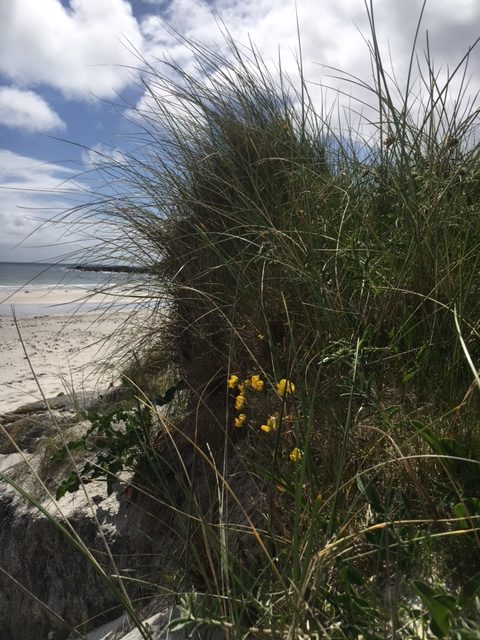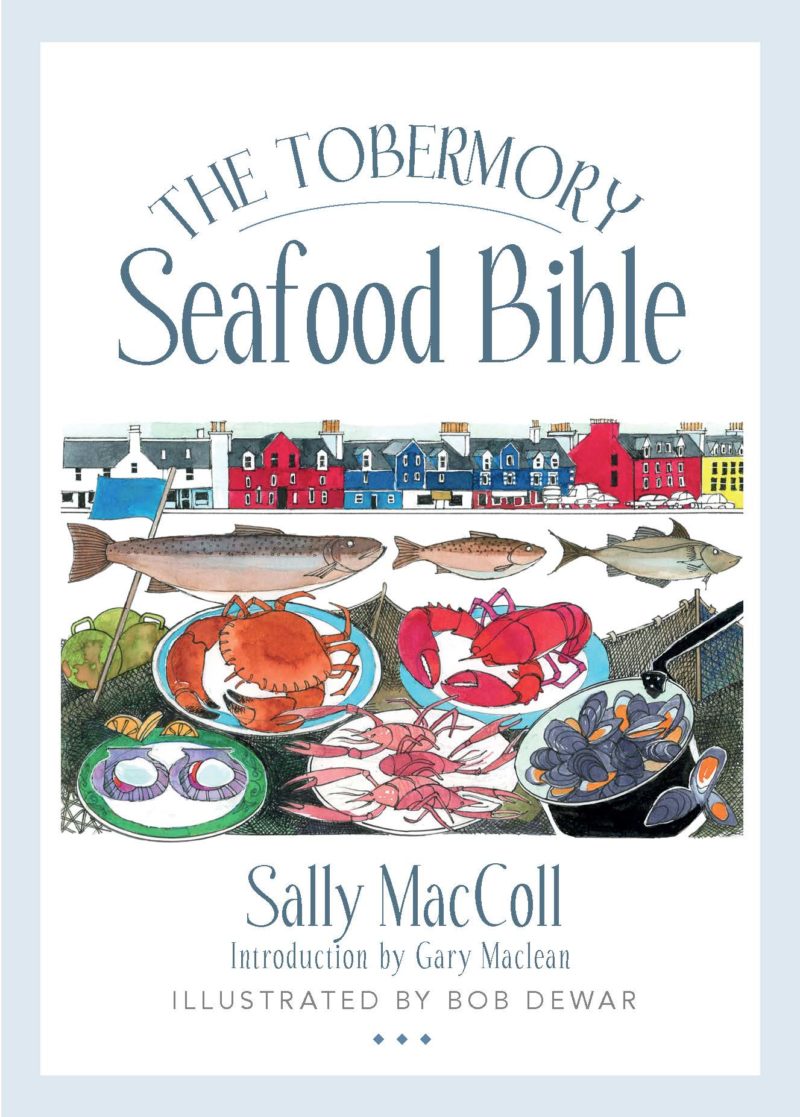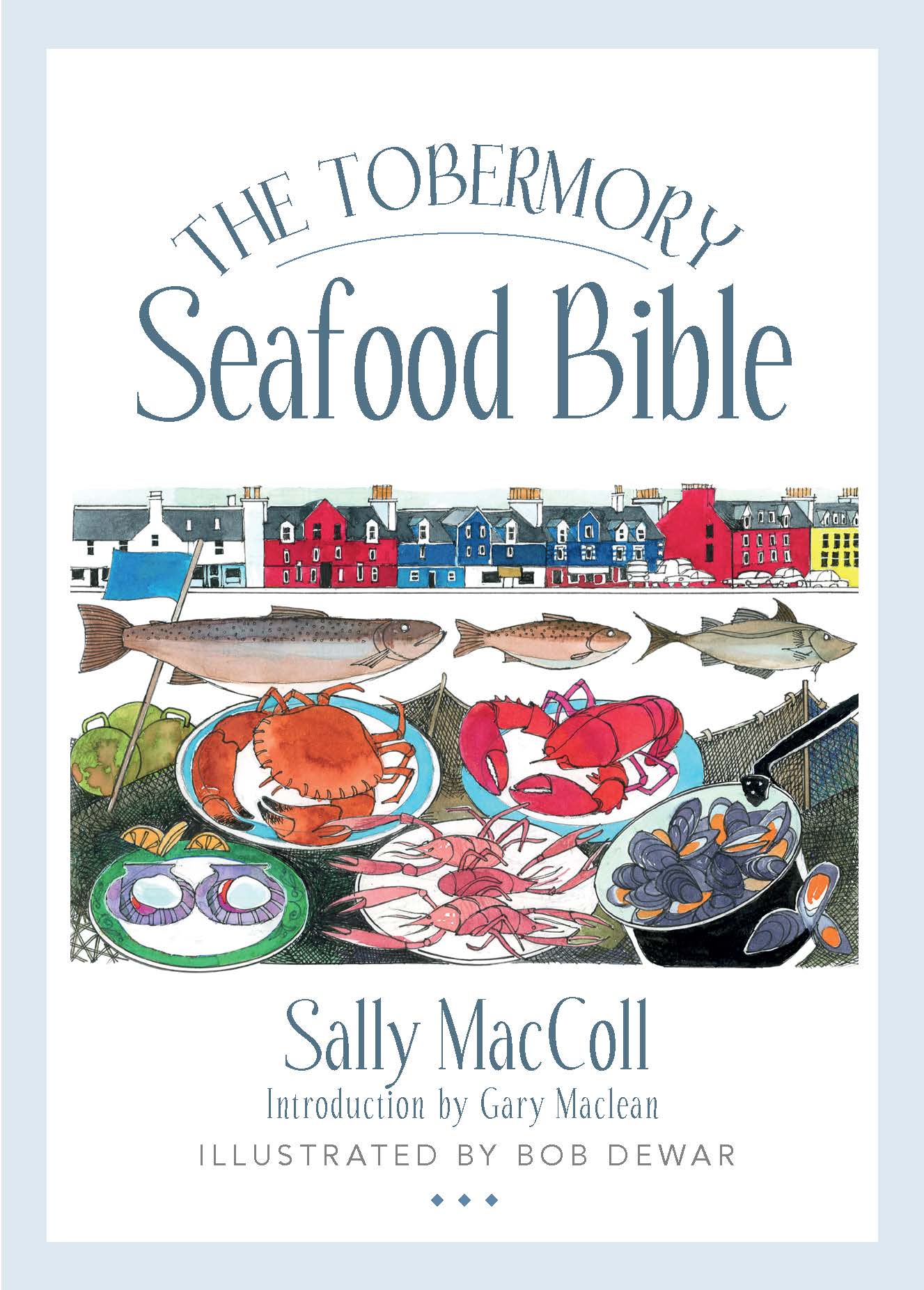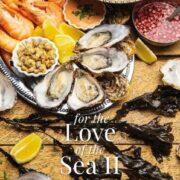Tobermory Seafood Bible
Sally MacColl (author) Bob Dewar (illustrator)
The Tobermory Seafood Bible is a super book to have as part of your everday cookery book collection. This book will help you look at how fish and shellfish can be included in your daily diet. All types of fish and shellfish are packed with healthy nutrients, from essential amino acids to essential fatty acids, so the immense variety of recipes contained in this book means you have an almost infinite choice of very highly nutritious meals.
In this book, Sally MacColl presents 50 delicious tried-and-tested seafood recipes featuring produce from the waters around her home, the Island of Mull, including white fish recipes (haddock), fatty fish recipes high in Omega-3 fatty acids (salmon, trout and mackerel), as well as wonderful shellfish recipes including mussels, langoustine, lobster, scallops and crab.

The book is arranged in easily-readable sections – ‘Quick and easy Fish Recipes’, ‘Quick and Easy recipes with Smoked fish’, ‘Quick and Easy recipes with shellfish’, ‘Favourite Fish Recipes’ and ‘Sides and Sauces’ – featuring a host of mouthwatering dishes, from Smoked Salmon Hash to Scallops with Island Black Pudding and Garlic Butter.
And there is a very useful section on buying and preparing fish.
Here are two extracts from the book on how to prepare Lobster and Mussels.
Lobster
Hebridean creel-caught lobsters are the ultimate luxury seafood, and as such are a highly-priced item. Many people find it hard to believe the blue colour of a live lobster as the lobster only turns red when cooked. They can be purchased
live or ready-cooked.
If you buy a live lobster, make sure the claws have rubber bands on them, or you could get a nasty nip. Keep the live lobster in the fridge wrapped in a damp cloth and cook on the day of purchase. Put the lobster in the freezer for 15–30 minutes prior to cooking to sedate the lobster without freezing the meat.
In a pot of boiling water a 750g (1lb 10oz) lobster takes about 15 to 20 minutes to cook (add two minutes for each additional 100g (4oz) in weight). After cooking, cool quickly to avoid over-cooking. Pull off the claws in order to crack
them open and remove the luscious white meat. Pull off the tail. One small fact to remember if you are cutting alobster tail for the first time: it’s easier to split the tail by cutting through the hard top shell first rather than the soft
underside.

Mussels (rope-grown)
Rope-grown mussels are perhaps the most environmentally perfect food. Put ropes in the sea and the mussels grow on them ready for harvesting.
Mussels in the shell are cooked live. 1kg
(2lb 4oz) bag of mussels will do two people for a starter course. Separate out any open mussels. If they stay open when tapped, discard them as they are dead – and dangerous to eat!
Scrape off any
barnacles and wash in cold water. Pull away the fibrous ‘beard’ (used to anchor the mussel) just prior to cooking and not earlier, as removing it can kill the mussel. To a pot, add half an onion, a knob of butter, about a teaspoon of chopped parsley and a crushed garlic clove. Add 250ml (½pt) of white wine, then a kilo of cleaned mussels. Bring to the boil. Cover the pot with a lid and steam for 5–7 minutes until the mussels are open and plump. Throw away any that have not opened, as they were already dead before
cooking.
The information from this book will give you the confidence to cook any type of fish and shellfish.
The Tobermory Seafood Bible is published by Birlinn www.birlinn.co.uk.(available from October) and can be purchased from all the usual book outlets.

LET’S CONNECT!
You can also subscribe to Foodie Explorers to keep up to date










